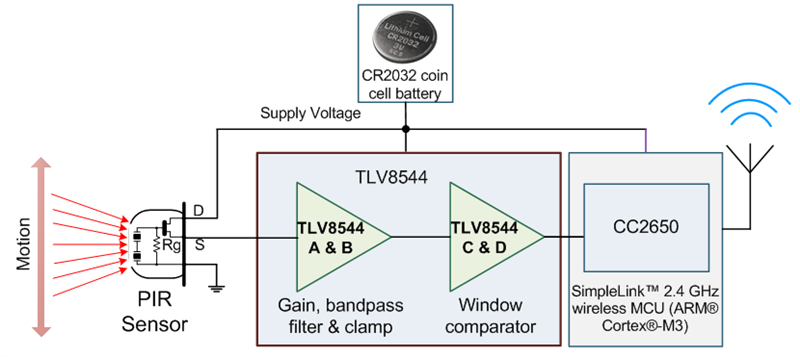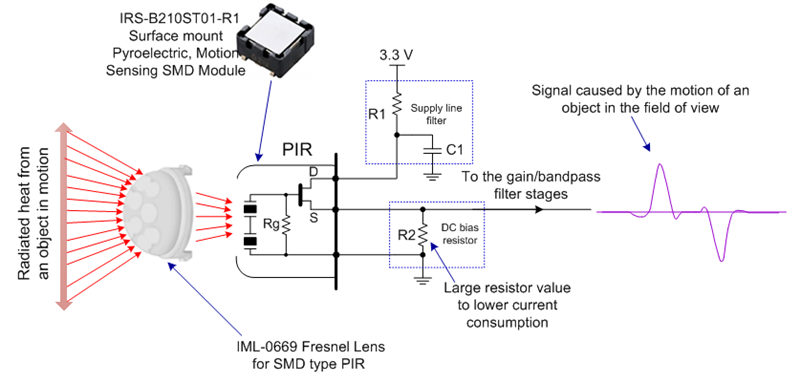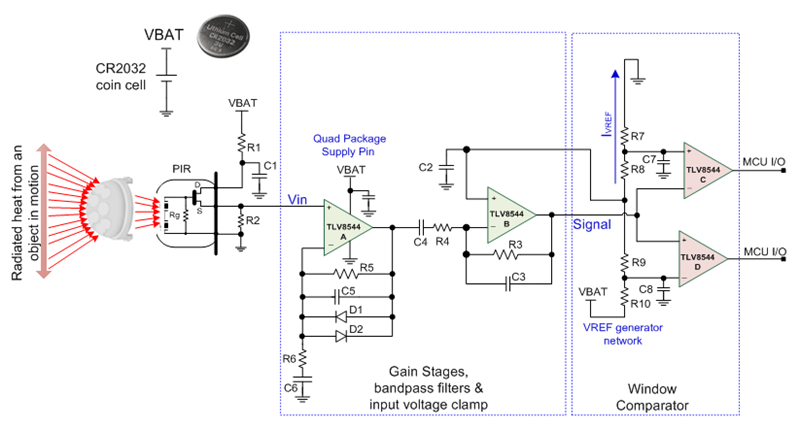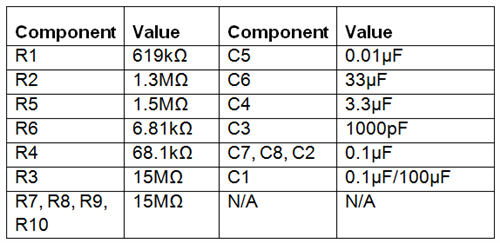SSZTA55 may 2017 TLV8544
PRODUCTION DATA
- 1
-
2
- 3
- What Are PIR Transducers?
- Why Not Power Cycle the PIR Sensor to Reduce Power?
- How Can I Reduce PIR Transducer Current Consumption?
- What Is the Penalty for Starving a PIR Transducer?
- What Type of Circuit Compensates for These Losses?
- What Is the Total Current Consumption of the PIR and Analog Path?
- Conclusion
- Additional Resources
Bahram Mirshab
Wireless, battery-operated, passive infrared (PIR) motion detectors (represented in Figure 1) are gaining popularity in monitoring systems for smart buildings. In these systems, for a single CR2032 coin-cell battery to power the entire circuit close to the circuit’s lifetime, both the PIR sensor and related analog front end (AFE) must have current consumption below 3μA.
In this blog post, I’ll answer some hypothetical questions about PIR transducers and how careful design can significantly lengthen battery life in wireless motion detectors.
 Figure 1 Block Diagram of a Wireless Battery-operated PIR Motion-detector System
Figure 1 Block Diagram of a Wireless Battery-operated PIR Motion-detector SystemWhat Are PIR Transducers?
Why Not Power Cycle the PIR Sensor to Reduce Power?
How Can I Reduce PIR Transducer Current Consumption?
 Figure 2 Surface-mount PIR Sensor, Fresnel Lens, Related Passive Components and Output Signal
Figure 2 Surface-mount PIR Sensor, Fresnel Lens, Related Passive Components and Output SignalWhat Is the Penalty for Starving a PIR Transducer?
What Type of Circuit Compensates for These Losses?
 Figure 3 The Analog Stages for Filtering and Amplifying the Sensor Signal
Figure 3 The Analog Stages for Filtering and Amplifying the Sensor Signal Figure 4 Passive Component Values of the PIR Interface Circuit
Figure 4 Passive Component Values of the PIR Interface CircuitWhat Is the Total Current Consumption of the PIR and Analog Path?

where is the current consumption of the PIR transducer; is the leakage current of the reference generator network to ground and is the current consumption of the TLV8544.

In our solution, the current consumption is 2.16µA, helping to lengthen the lifetime of the CR2032 coin-cell battery.
Conclusion
Additional Resources
- Download the TLV8544 nanopower op amp datasheet.
- Evaluate nanopower op amp functionality as an AFE in a PIR motion-detector system using the TLV8544 BoosterPack and find additional information in the user’s guide.